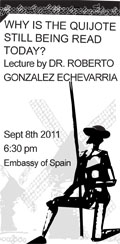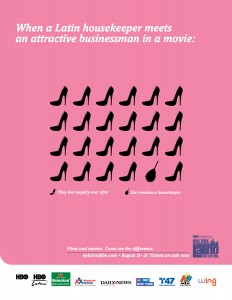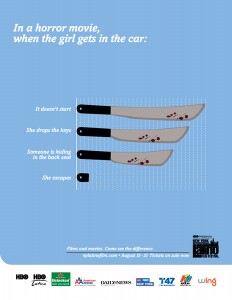Posted by Elena del Valle on August 31, 2011

Mercadito Midtown
Photos: TransMedia Group, Mercadito Midtown
Earlier this month, Rock Hard Taco, a Mexican cuisine restaurant with a So-Cal style atmosphere, opened in Boca Raton, Florida (scroll down for the Rock Hard Taco Mahi Mahi Tacos recipe courtesy of Rock Hard Taco). Not too far south in Miami Mercadito Midtown serves creative Mexican cuisine, especially tacos.
The Mercadito restaurant and its sister properties specializing in Latin American cuisine are owned and operated by Mercadito Hospitality, a company that has grown from a first New York City location in 2004 to four restaurants. The company, owned by Alfredo Sandoval, Felipe Sandoval and Patricio Sandoval, has a second restaurant in New York and one Chicago.

A dish at Rock Hard Taco
What down economy? You wouldn’t know there is a stagnant economy in the country by watching this company’s growth. Mercadito Hospitality, which also owns and operates Double A, an exclusive cocktail lounge next to Mercadito in Chicago, plans to open Tavernita, a second Chicago restaurant, this summer and a second one in Miami this fall. Company executives believe their success can be attributed to the innovative interpretations of traditional Mexican cooking of Chef Patricio Sandoval, and the complex flavored beverages on offer.
At the same time that ethnic food restaurants gain popularity nationwide (see Hispanic, Asian foods booming ) the popular food truck movement in urban areas and television cooking programs nationwide may be the continuing catalyst for at home trial of ethnic foods. It seems there is room for growth in varied ethnic food types, according to Ethnic Foods U.S. January 2011, a Mintel (a research company) survey released earlier this year.

Carnitos Tacos at Mercadito Midtown
The more consumers are exposed to foreign cultures and cuisines the more likely they may be to try preparing some of those dishes at home, especially this year when many families are eating at home frequently due to increases in unemployment and related issues. Mintel analysts believe consumers preparing ethnic foods at home are more likely to be of a nationality or heritage different than that of the food type they are preparing.
For example, although less than 65 percent of the population is Italian 65 percent of survey responders said that they prepared at least one Italian meal at home in the past month. Similar percentages were evidenced for other ethnic foods: Mexican (60 percent), Chinese (42 percent), Spanish/Tapas (17 percent), Japanese (16 percent), Greek (12 percent), Indian (13 percent ), Thai (12 percent), and Korean (8 percent).
Rock Hard Taco Mahi Mahi Tacos
Posted by Elena del Valle on August 29, 2011

Peter Winick, content strategist
Photo: Peter Winick
A podcast interview with Peter Winick, content strategist. is available in the Podcast Section of Hispanic Marketing & Public Relations, HispanicMPR.com. During the podcast, Peter discusses monetizing your platform strategically with Elena del Valle, host of the HispanicMPR.com podcast.
Peter is a New York City based content strategy consultant who works with non-fiction authors and thought leaders. He has over twenty years of experience and has worked with a large number of bestselling authors and renowned thought leaders including Keith Ferrazzi, Chip Conley, Steve Shapiro, and Carol Roth. He has built and managed several consulting and professional development organizations. He can be found online at thoughtleadershipleverage.com
To listen to the interview, scroll down until you see “Podcast” on the right hand side, then select “HMPR Peter Winick” click on the play button below or download the MP3 file to your iPod or MP3 player to listen on the go, in your car or at home. To download it, click on the arrow of the recording you wish to copy and save it to disk. The podcast will remain listed in the August 2011 section of the podcast archive.
Posted by Elena del Valle on August 26, 2011

Brand Atlas book cover
Photos: Dean & Blume PR
In Brand Atlas Branding Intelligence Made Visible (Wiley, $29.95), a 144-page hardcover book published this year, Alina Wheeler and Joel Katz outline the basic ideas they consider important for readers wishing to understand and make use of branding today. Their objectives in the book are to focus on what they consider the three essential areas to be conquered for those seeking to build their brand: understanding the marketplace and its trends, understanding brand basics and gaining access to the right methods and tools.
The book, filled with four-color pages, is divided into four main sections: Dynamics, Intelligence, Drive and Details. The concepts are outlined briefly, one per page, across from a four-color design page. The authors discuss topics such as global sourcing, word of mouth, open source, social networks, transparency, sustainability, Freeconomics (making a profit while offering free content), touchpoints, authenticity, and perception.
Wheeler, a branding consultant, authored Designing Brand Identity. She was advisory council member for The Dictionary of Brand. Katz, an information designer specializing in visualization of complex information, teaches at The University of the Arts and Philadelphia University.

Alina Wheeler, coauthor, Brand Atlas

Click to buy Brand Atlas
Comments:
Filed Under: Books
Posted by Elena del Valle on August 25, 2011
Information provided by Event Partner

“Why is the Quijote Still Being Read Today?”
By Yale Prof. and National Humanities Medal Roberto González Echevarría
A keynote lecture followed by a reception complimentary admission
6:30 p.m. September 8, 2011
Embassy of Spain – 2375 Pennsylvania Ave NW. Washington DC 20037
Roberto González Echevarría, Yale Sterling Professor of Hispanic and Comparative Literature and 2011 National Humanities Medalist, will discuss
“Why is the Quijote Still Being Read Today?”
The fashion of equating the Quijote with Spain emerged during the Romantic period in the first half of the nineteenth century and peaked with the so-called Generation of ‘98, particularly with Unamuno. It extended throughout the twentieth century with authors such as Américo Castro and can be found in Franco regime propaganda which promoted the concept of “Hispanidad” as an essential component of its ideology.
Yet this conflation of text and country is as much a relic of the past, as the Quijote’s notion of chivalry.
Although the Quijote is not read with the past’s evangelical fervor in schools or universities in modern day Spain, the novel continues to be devoured by writers, intellectuals, and the general public the world over. Indeed, the democratic government of Spain has continued to endorse Cervantes’ work, subsidizing an excellent edition of his novel, edited by Francisco Rico, which sells for a very modest price. In 2006 I bought a copy at the Santiago, Chile, airport for the equivalent of ten dollars, a real bargain for a hardcover book with an essay by Nobel Prize winner Mario Vargas Llosa.
Latin America is obsessed with the Quijote. Writers such as Jorge Borges, Alejo Carpentier, and Carlos Fuentes have written about it, and others, including Gabriel García Márquez have incorporated some of the Quijote’s topics and literary devices into their work. The Penguin classics English translation for which I wrote the prologue has sold over 10,000 copies.
But why is a book published more than 400 years ago still read by writers and readers of all languages? Because Cervantes not only inaugurated the concept of the modern novel as we know it, but seems to have taken it to the limit its possibilities. Cervantes’ technical discoveries are still valid for today’s novelists–from the creation of characters by means of dialogue to the creation of characters, by other characters! Additionally, the general public continues to find in the Quijote attitudes and ideas that are still valid to daily life, and for the understanding of their relation with an often hostile world. My conclusion has found validation from Colombian Nobel Prize winner García Márquez who has declared “everything is already in Cervantes.”
With Hamlet, Don Quijote is the quintessential modern hero, as visceral, flawed and relevant to today’s turbulent times as he was at the dawn of the Siglo de Oro.
Biography
Roberto González Echevarría, Sterling Professor of Hispanic and Comparative Literature, was awarded a National Humanities Medal by President Barack Obama in a White House ceremony on March 2, 2011.
The Yale professor is among 10 distinguished individuals to receive the honor, which recognizes those “whose work has deepened the nation’s understanding of the humanities, broadened our citizens’ engagement with the humanities, or helped preserve and expand Americans’ access to important resources in the humanities.” Up to 12 medals can be awarded each year.
Among the other National Humanities Medal honorees novelists Joyce Carol Oates and Philip Roth. During the ceremony, Obama also honored this year’s 10 recipients of the National Medal of Arts including actress Meryl Streep.
González Echevarría was honored in the East Room ceremony for his contributions to Spanish and Latin American literary criticism. He is considered one of the world’s foremost experts on Spanish and Latin American literature. He is the author of Alejo Carpentier: The Pilgrim at Home, The Voice of the Masters: Writing and Authority in Modern Latin American Literature, Myth and Archive: A Theory of Latin American Narrative (which was awarded outstanding book prizes from the Modern Language Association and the Latin American Studies Association), Celestina’s Brood: Continuities of the Baroque in Spanish and Latin American Literatures, and Crítica práctica, práctica crítica. He co-edited the three-volume Cambridge History of Latin American Literature and edited the Oxford Book of Latin American Short Stories. He also edited a CD-ROM on the life and work of Miguel de Cervantes, for which he received Choice magazine’s Outstanding Academic Book Award for 1998.
A native of Cuba and former semi-professional baseball player, González Echevarría received widespread media attention for his 1999 book The Pride of Havana: A History of Cuban Baseball. His most recent book, Cuban Fiestas, is forthcoming from Yale University Press, and he is currently writing a history of modern Latin American literature for an Oxford University Press series. He is also a private pilot.
González Echevarría is a graduate of the University of South Florida. He earned his M.A. at the University of Indiana and his M.Phil. and Ph.D. degrees at Yale in 1968 and 1970, respectively. He was an assistant professor at Yale 1970-1971 before teaching for six years at Cornell University, returning to Yale in 1977. He became a full professor in 1980 and five years later was appointed the R. Selden Rose Professor of Spanish, the first endowed chair ever granted by Yale in the field of Spanish. He became the Bass Professor of Hispanic and Comparative Literatures in 1991 and was honored with the Sterling Professorship in 1995. He has served as chair of the Department of Spanish and Portuguese for more than 16 years, in different terms, and has also chaired Yale’s Council on Latin American Studies.
In 2001, González Echevarría was named a William Clyde DeVane Professor, a major Yale University tribute. As such, he taught a semester-long undergraduate course, “Love and the Law in Cervantes,” and offered public lectures on the topic. A book of the same title, based on those lectures, was published in 2005.
The literary scholar has been awarded a Guggenheim Fellowship and grants from the National Endowment for the Humanities, the Rockefeller Foundation and the Social Science Research Council. He has been an invited lecturer at universities in the United States, Europe and Latin America, and was the first Hispanist invited to teach in the School for Criticism and Theory. He has received honorary degrees from Colgate University and the University of South Florida, and was elected a member of the American Academy of Arts and Sciences in 1999.
Contact: info@lidereshispanos.org
Posted by Elena del Valle on August 24, 2011

The Mobile Consumer slide – click to enlarge
Photos: Briabe Mobile
A recently released report indicates mobile phones may play a significant role for moviegoers, especially Hispanics. According to the study results, Hispanics attend movies more frequently than other ethnic groups (these findings second those of a Nielsen study indicating Hispanics represent 28 percent of moviegoers), and many may be using their mobile devices to find theaters, movie times and reviews. The report found that 75 percent of Hispanic respondents said they go to the movie theater once a month, and 25 percent said see movies three times a month.

James Briggs, chief executive officer, Briabe Mobile
“This report proved to be a treasure trove of relevant information for both the entertainment industry and marketers, as it highlights numerous opportunities for deploying mobile strategies to successfully get Hispanic moviegoers into theaters,” said James Briggs, chief executive officer, Briabe Mobile.
Seventy-two percent of Hispanic respondent said they use their mobiles to make movie plans; 39 percent view trailers; 35 percent use it to discover movies; 28 percent find reviews; 14 percent buy tickets; and 55 percent use their phones to access movie information within the four hours just prior to seeing a movie, making the survey analysts believe the best time to approach Hispanic mobile phone users is within four hours of the start of the movie.

Justin Siegel, chief executive officer, MocoSpace
“Hispanics are some of the most highly engaged mobile consumers in the country,” said Justin Siegel, chief executive officer, MocoSpace. “This is why we’ve seen a consistent six-year increase in ad budgets for films and DVD releases shifting towards mobile, with campaigns specifically targeted at the mobile Hispanic consumer.”
The Mobile Consumer: Hispanics, Movies & Mobile, the mobile phone survey from MocoSpace and Briabe Mobile, was conducted June 2011 among 1,130 people including 425 Hispanic survey respondents. Briabe Mobile is a multicultural marketing agency and MocoSpace is a mobile entertainment website.
Posted by Elena del Valle on August 22, 2011

MK836 With Us or Against Us album cover
Photos, song: HardKandyLand Private Studios
Earlier this month, MK836, an electronic trip hop hip hop group, launched With Us Or Against Us, its first album. The album was produced by Brother Noyze The Mad Musician and D-Note with most of the vocals by Tiffany Nikeita. Scroll down to listen to Sky from With Us Or Against Us by MK836.
The name of the group derives from Mark 8:36, a psalm (“What does it profit a man to gain the whole world but lose his soul” referring to the music business that can be so corrupt). The lyrics were written by D-Note/ The album was recorded, mixed and mastered in HardKandyLand Private Studios in Hillside, New Jersey.

MK836 is Brother Noyze The Mad Musician, D-Note and Tiffany Nikeita
“We only featured two other singers besides Tiffany on this album and they only did one song each, (the) next album may be different.” said D-Note. “This experience has been amazing, especially last year when we presented some of the songs in France for music industry people from around the world to positive reactions.”
Born in Livingston, New Jersey D-Note (Christopher Collins) loved music from an early age. He began his professional music career after being introduced to Brother Noyze The Mad Musician (Greg L.Hines) by Murdock (Theo Holmes), a mutual friend. D-Note is one half of the recording group Jersey Advocates, a socially conscious hip hop duo, with LJ (Stephen Sebastiao).
Nikeita, born and raised in Trinidad and Tobago, learned to sing by listening to the radio as a child. She was introduced to Hines by Jason Paterson, a mutual friend. After she and Hines recorded a few songs together, he offered her a recording contract.
Hines was born in Newark, New Jersey and began entertaining at an early age at family and school functions by singing, doing character impersonations, acting and reading poetry. He has produced rock, pop, jazz, electronic, trip hop and hip hop albums.
Posted by Elena del Valle on August 19, 2011

Nothing to Lose book cover
Photo: Higher Level Group
When Ryan Blair was a boy he suffered hardships and made bad choices that led to unfortunate results. As a young man his life took a better turn and eventually he became a self-made multimillionaire and serial entrepreneur. He established his first company, 24-7 Tech, when he was twenty-one years old, and has since created and actively invested in multiple start-ups.
More recently, as the head of ViSalus Sciences during the height of the 2008 recession he turned the company around from near failure to more than $10 million a month in only 15 months.
Blair recently shared some of his life and business experiences and opinions in Nothing to Lose, Everything to Gain: How I Went from Gang Member to Multimillionaire Entrepreneur (Portfolio Hardcover, $25.95), a 214-page softcover book divided into eighteen chapters.
The author believes that people with nothing to lose have great potential. He is convinced that his street smarts and nothing-to-lose attitude account for his success in life.
“There is nothing more dangerous than someone with nothing to loose,” he says. “Just like an animal backed into a corner your survival instincts kick in.” In the Epilogue he also says that “No matter how successful you are, you have to take every last day and live it as if you had everything to gain.”

Click to buy Nothing to Lose, Everything to Gain
Comments:
Filed Under: Books
Posted by Elena del Valle on August 17, 2011

Sandie Viquez Pedlow, executive director, Latino Public Broadcasting
Photo: Latino Public Broadcasting
Latino Public Broadcasting (LPB), established in 1998 by Edward James Olmos and Marlene Dermer, is a Los Angeles, California based national non profit organization created to offer “new audiences to public television with a recognizable impact on a broad range of viewers that complement and challenge existing public television offerings.” The organization’s leaders seek to fill its mission of supporting “the development, production, post-production, acquisition and distribution of non-commercial educational and cultural content that is representative of or addresses issues of particular interest to U.S. Latinos” with an annual $1.5 million budget provided by the Corporation for Public Broadcasting.
“We work closely with Latino independent producers and filmmakers across the country to fund those projects that are relevant, that take creative risks, that have strong potential to engage a national audience and provide a lens to the history, culture and arts of the diverse Latino community,” said Sandie Viquez Pedlow, executive director, Latino Public Broadcasting by email when asked how the organization meets its mission and what criteria it uses to select projects. “We are always looking for those engaging stories that will enlighten and inform the American public and provide a voice to Latinos on public media.”
The organization’s most noteworthy recent productions include The Storm That Swept Mexico, Latin Music USA, Cachao: Uno Mas, and The Longoria Affair. The Latino Americans, a six part series, is planned for 2012. Its programs air on PBS stations nationwide. This month LPB received the 2011 Norman Lear Award Imagen Award which is given each year to a Latino writer or entity that has “excelled creatively to dispel negative stereotypes and perceptions of the Latino community.”
“These are exciting, dynamic as well as challenging times for public media and this award is a true honor and a wonderful validation of our work at LPB,” said Olmos. “As our Latino community increases in numbers, diversity and influence, we are more committed than ever to helping producers tell our stories and reaching ever broader audiences.”
Since its inception LPB has funded more than 200 projects, and organized 100 workshops, panels and screenings in California, Arizona, New Mexico, Colorado, Illinois, Florida, Texas, New York, and Massachusetts for the advancement of Latino producers and to showcase Latino-American culture. LPB collaborates with other minority consortia, and works closely with the Public Broadcasting Service (PBS), American Public Television (APT), and Independent Television Service (ITVS).
In addition to Olmos who is the chairman other board members are: Marlene Dermer, executive director, Los Angeles Latino International Film Festival; Frank Cruz, president, Cruz and Associates; Mel Rogers, general manager and president, KOCE; Cynthia A. Fenneman, president and chief executive officer, American Public Television; J. Wendy Thompson-Marquez, president and chief executive officer, EVS Communications; Dan Soles, senior vice president and chief television content officer, WTTW; and Irwin W. Young, chairman of the board, DuArt Film Laboratories, Inc.
Posted by Elena del Valle on August 16, 2011
Information provided by Event Partner

The 9th Annual Hispanic Television Summit
Tuesday, September 20th
Marriott Marquis New York Hotel, Times Square
Discount pricing for HispanicMPR.com subscribers
$50 off regular price of $425 until September 1st ($375) & $100 off regular price of $499 after September 1st ($399)
Enter Promo Code: HTS1
The Hispanic Television Summit is the signature conference for executives involved in the business of television and digital video targeted to the US Hispanic and Latin American viewing audience. The Summit will be held Tuesday, September 20th, 2011 at the Marriott Marquis New York Hotel, Times Square. It is presented by Broadcasting & Cable and Multichannel News. This year’s 2011 recipient of the Award for Achievement in Hispanic Television is Monica Gadsby, CEO, U.S. Multicultural & Latin America, Starcom MediaVest Group. Confirmed Keynote Speakers include Ed Gold, Advertising Director of State Farm and María Elena Salinas, Univision Network Co-Host of Noticiero Univisión and Aquí y Ahora.
To register, please visit www.multichannel.com/hispanic2011 or call Sandy Friedman at 917 281 4718
Posted by Elena del Valle on August 15, 2011

NYILFF Wing 2011 ad – click to enlarge
Photos, video: Wing
Hoping to attract English speaking New York City residents between 25 and 45 years of age to its twelfth annual event the organizers of the 2011 New York International Latino Film Festival (NYILFF) launched a new ad campaign the first week of August created to highlight a difference between movies and films by ribbing Hollywood movie cliches. The campaign with an estimated $50,000 in production costs and as much as one million dollars in paid and pro bono placements, was shot in Argentina with post production work in the United States. Scroll down to watch an ad.
The campaign emphasizes the shortage of Latinos in mainstream movies as well as the idea that Latino films concentrate on life compared to the “larger than life” abundant in blockbusters by showcasing stereotypical concepts like: The number of shots a six-round revolver can take in a movie without reloading, what happens in movies when a Latina housekeeper meets an attractive businessman, the names of gardeners in movies, and what happens in horror movies when a girl tries to get in a car.
TV and in-cinema ads, titled Asteroid, Dynamite, Fruit Stand Guy and Man in the Mirror, were produced by Wing, a New York ad agency, on a pro bono basis with the help of Academy Award winning Argentinean Production Company Puenzo Hermanos. The film festival staff believe the event’s audience consume a variety of media and love New York “for its energy and for everything it has to offer” and “define themselves as adventure-seekers and search out new and interesting experiences to fill their social calendar.”

NYILFF Wing 2011 ad – click to enlarge
Each spot in the 2011 campaign makes fun of stereotypical Hollywood movie characters and ideas, and includes the tagline “Films and movies. Come see the difference.” In addition to TV, there are eight print and out-of-home ads in English and Spanish. The campaign seeks to reach “a broader audience with a commentary on the simplistic nature of Hollywood films, rather than an overtly Hispanic approach,” according to promotional materials.
Wing also created agency promotional material in-cinema and print that encourages people to let their Latino out. The in-cinema spot, intended to be “a whimsical and light-hearted effort” that shows an “un-Latin looking thin man” growing a thick mustache and liking it, attempts to emphasize the Hispanic influence on the mainstream market. Fifteen staff, led by Cionin Lorenzo, Elizabeth Gardner, Calixto Chinchilla, dedicated six months to the campaign production the success of which will be measured through ticket sales and on-line views. Festival staff anticipate 25,000 attendees at this year’s events.
The campaign was launched in NBC/Telemundo, HBO, Time, Out New York, Latina Magazine and the New York Daily News. In addition to the ads, the festival has active Facebook and Twitter pages where the new ads have been heavily promoted, a spokesperson indicated when asked about online placement of the ad campaign. The festival website was revised to coincide with the look and feel of the campaign. Also, the film festival independently created banner ads with geo-targeted placement on Hispanic websites. No information was available on which sites exactly.
The New York International Latino Film Festival strives to showcase the works of emerging Latino filmmakers in the United States and Latin America. This year’s festival run August 15-21 in various New York City theaters.




























